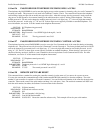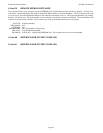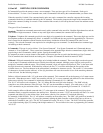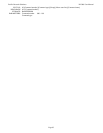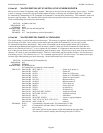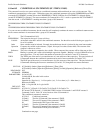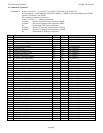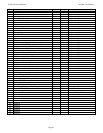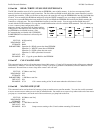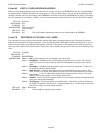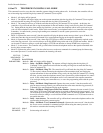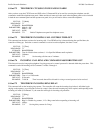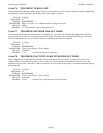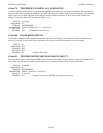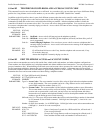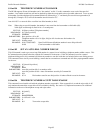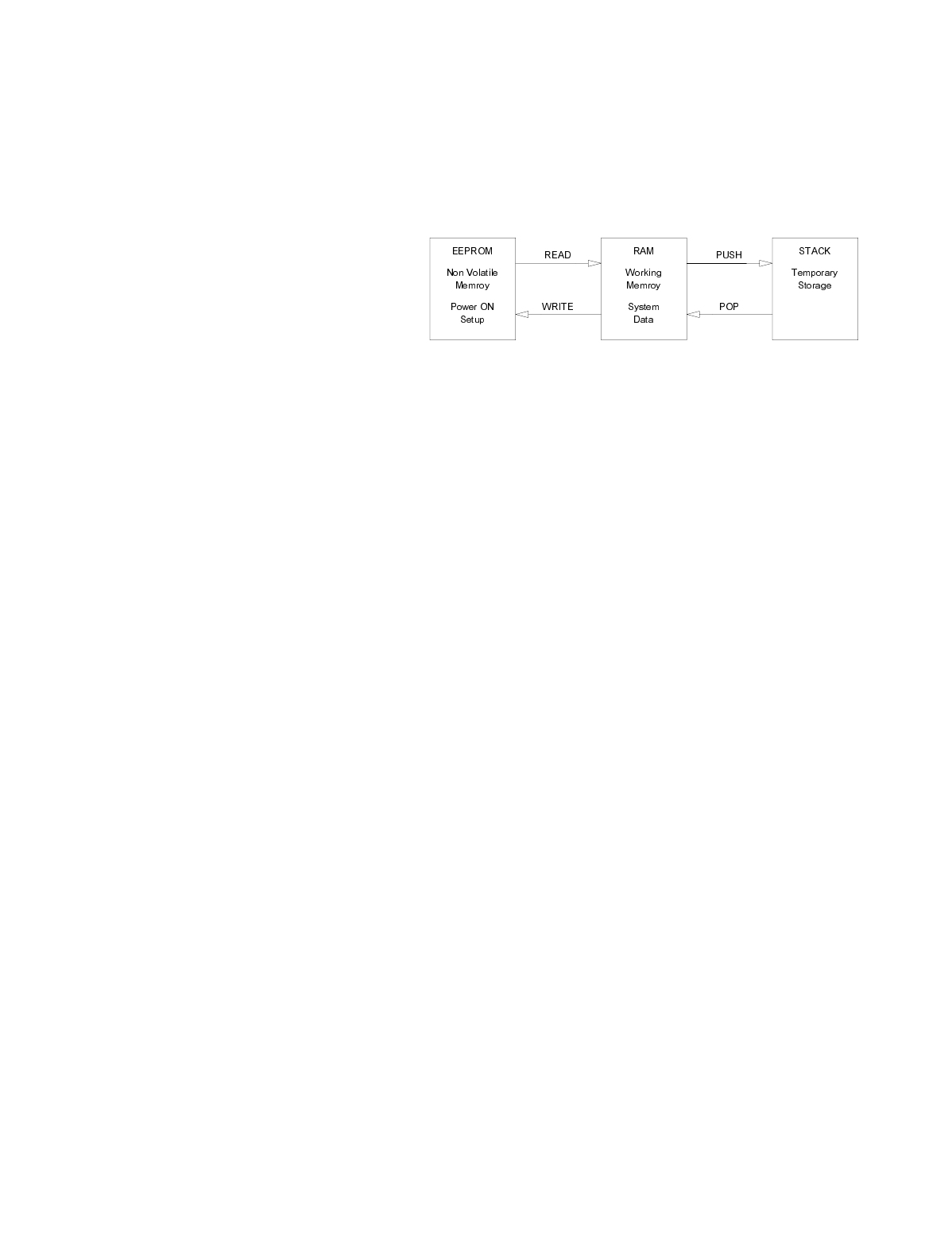
Pacific Research Solutions RI-300e User Manual
Page 88
S-Cmd 66 READ / WRITE / PUSH / POP SYSTEM DATA
The RI-300 controller stores all of its system data on EEPROM, a non-volatile memory. It also has two temporary RAM
memory locations for storing this same system data. The first of the two RAM locations holds the systems data that is used in
operating the controller. When you first turn on the power, the controller will copy the EEPROM data into this first RAM data
location. You can modify this RAM data and then by using the WRITE command, save your changes to the EEPROM. Or,
you may have system RAM that has been modified, and you can READ the EEPROM data back into the RAM, returning the
controller to a normal state. The second RAM data location is used like a stack. You can copy the first RAM data to the
second with the PUSH command. Or, copy the second RAM location to the first with the POP command. This will allow you
to save a current system configuration, make a
temporary change, and then recall the former settings.
When power is first turned on, the controller will copy
the EEPROM to both RAM locations. Only
S-Commands that are labeled with “STORAGE:
RAM/EEPROM” have data that is affected by this
command.
SYNTAX: 66 [Operation]
READ BACK N/A
STORAGE: RAM
PARAMETERS: Operation 0 = READ system data from EEPROM
Operation 1 = WRITE system data to EEPROM
Operation 2 = PUSH system data onto stack
Operation 3 = POP system data from stack
DEFAULT: N/A
EXAMPLE: 66 1 Copy the system RAM to the EEPROM
S-Cmd 67 CALL MACRO LINE
This command can be used to call another macro from within a macro. Control will be returned to the calling macro when the
called macro is finished. You can nest calls up to 32 deep. If an error or problem is encountered, all macro functions will be
terminated. Be careful not to create a loop where a macro will call itself.
SYNTAX: 67 [Macro start line]
READ BACK N/A
STORAGE: N/A
PARAMETERS: 1–999 Macro start line
DEFAULT: N/A
EXAMPLE: 67 34 Call a macro starting at line 34 and return when the called macro is done.
S-Cmd 68 MACRO LINE JUMP
This command can be used at the end of a macro to jump to another macro start line number. You can also use this command
to test or execute a macro when you are in the S-Command mode. Be careful not to create a loop where at the end of one macro
you jump to a second macro, and at the end of the second macro you jump back to the first.
SYNTAX: 68 [Macro start line]
READ BACK N/A
STORAGE: N/A
PARAMETERS: 1 – 999 Macro start line
DEFAULT: N/A
EXAMPLE: 68 34 Jump to macro starting at line 34 and continue executing S-Commands



